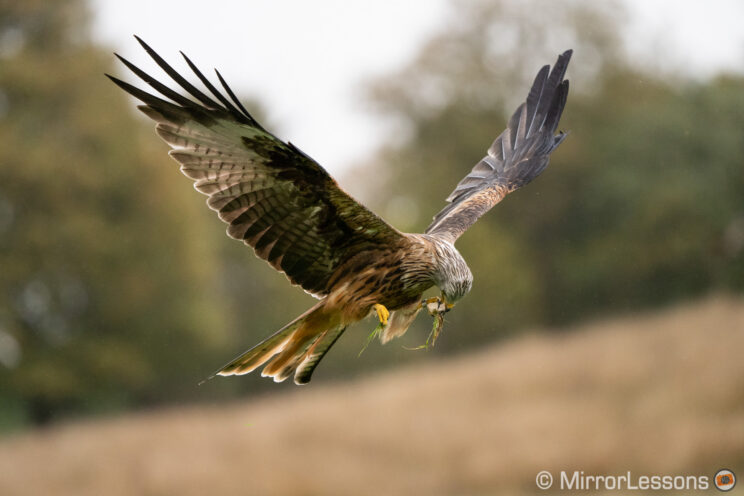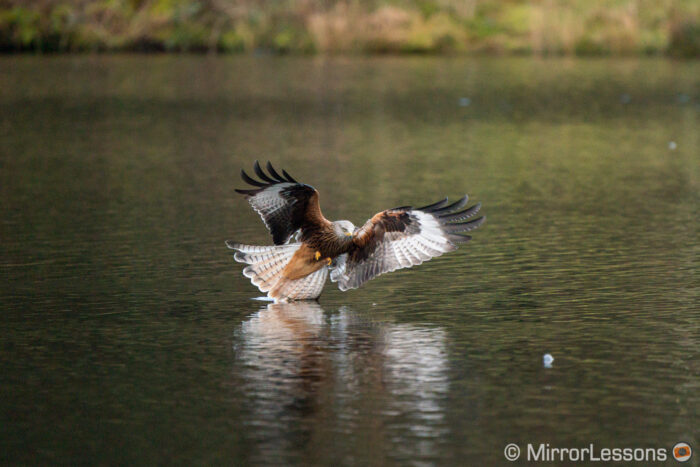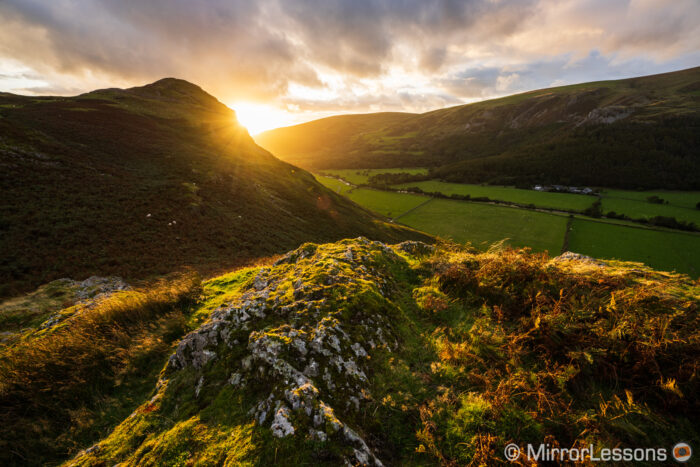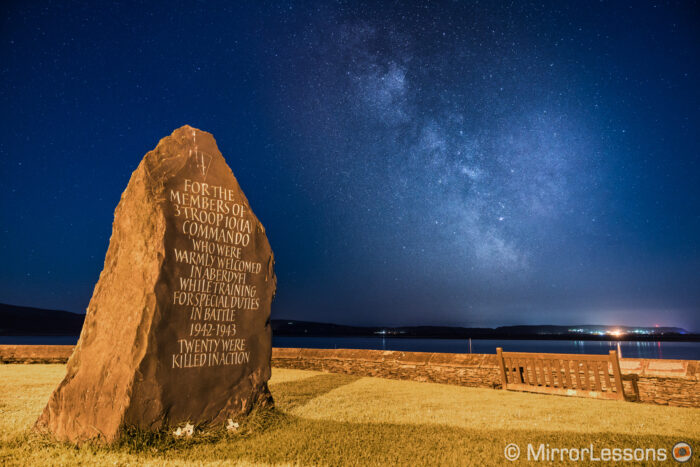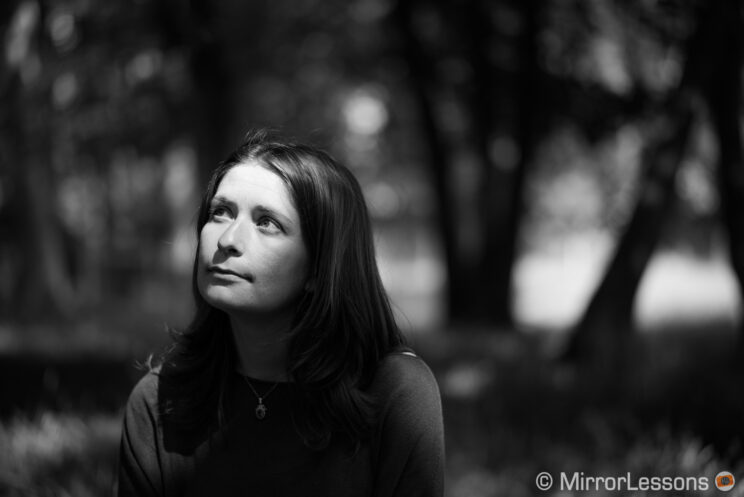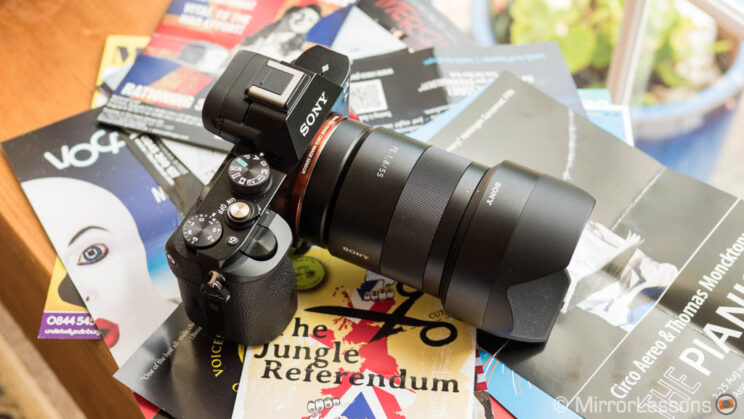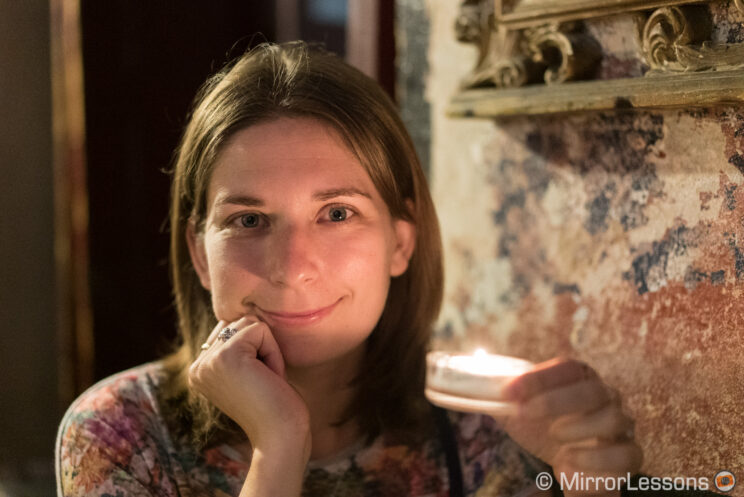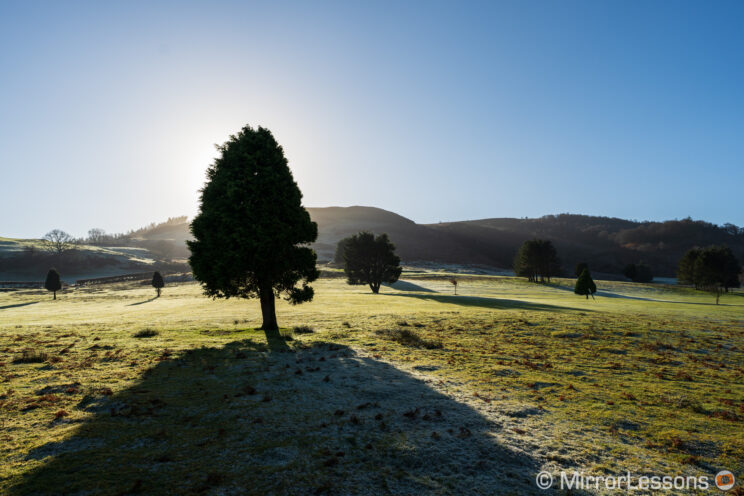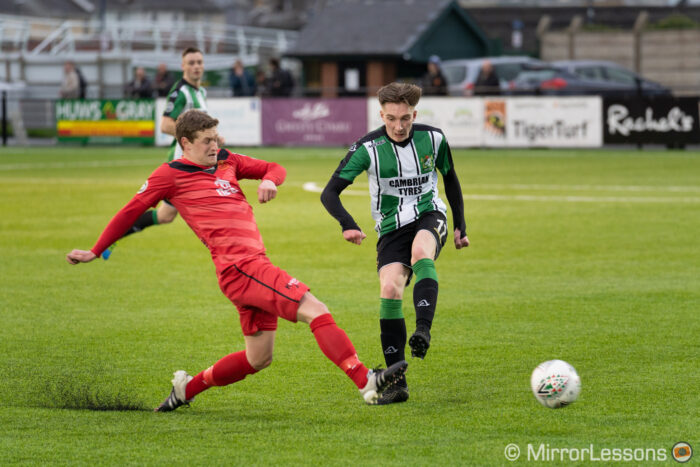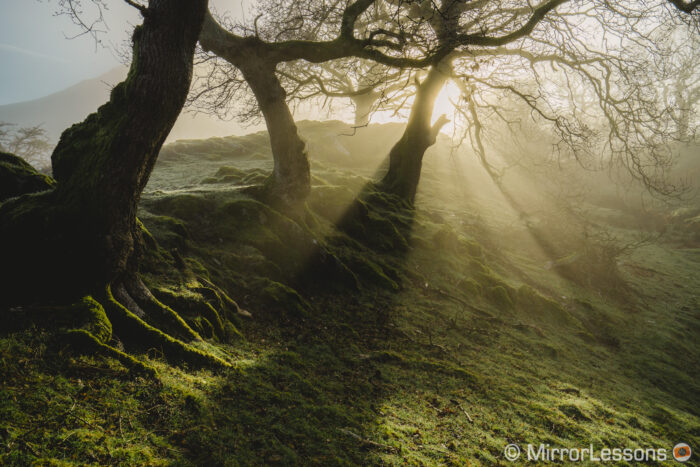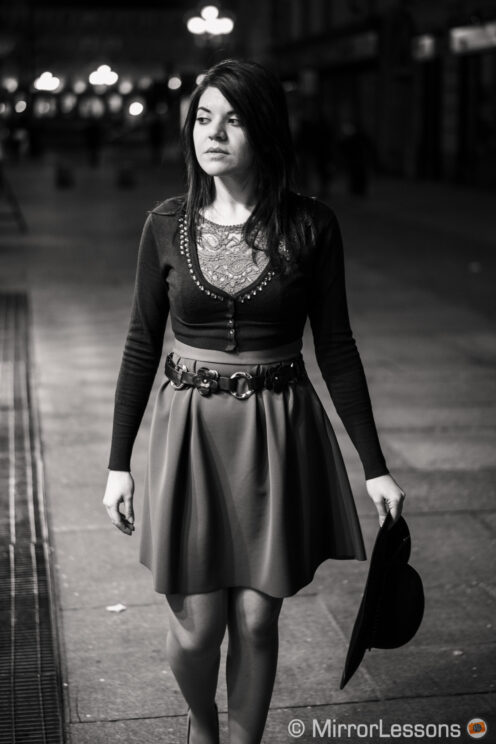Sony released its first full frame camera in 2008. It was called the A900, a DSLR using the Minolta A-mount. In 2012, they released the A99, a full frame camera with a translucent mirror (DSLT). Then in 2013, the first two full frame mirrorless cameras arrived: the A7 and the A7R.
Since then, Sony has cast the A-mount system aside and worked on growing its mirrorless E-mount system instead, which has made Sony one of the most successful full frame camera manufacturers today.
In this article, I’ve listed the 16 full frame mirrorless cameras produced by Sony so far (as per the publishing date). I explain the main differences, talk about their strengths and weaknesses, and give you some advice on whether it’s worth buying one, or not.
I hope you’ll find this guide useful, and don’t hesitate to let me know which model you’d go for, or which one you already own!
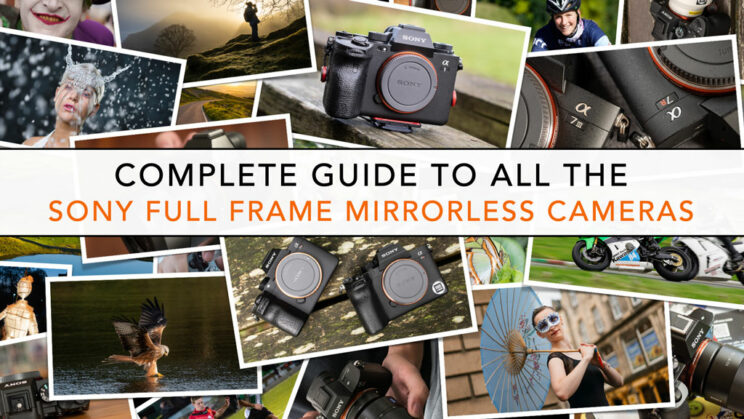
Note: the prices mentioned throughout the article are for the body only and are as of the publishing date, or the latest update marked at the top. Second-hand prices are an estimate and can vary depending on the condition, seller and country.
Ethics statement: this article is based on my personal experience with Sony full frame mirrorless cameras. We were not asked to write anything about these products, nor were we provided any compensation of any kind. Within the article, there are affiliate links. If you decide to buy something after clicking the link, we will receive a small commission. To know more about our ethics, you can visit our full disclosure page. Thank you!
Table of Contents
1. Useful information
2. The flagship: Sony A1
3. Fast performance: Sony A9 series
4. R for Resolution: Sony A7R series
5. S for Sensitivity: Sony A7S series
6. The all-rounder: Sony A7 series
7. Compact size: Sony A7C
8. V-Logger friendly: Sony ZV-E1
8. More resources on Mirrorless Comparison
Sony Alpha Comparison: Useful information
Let’s warm up by looking at the main characteristics of the Sony full frame E-mount system, and covering some basic explanations of a few technical terms. This is especially useful for those of you who are unfamiliar with Sony cameras.
Naming
The cameras are commonly called A7, A9 and so on, but the A actually refers to the alpha symbol (α) and that’s what you’ll see engraved on the camera body: α7, α9, α1 etc.
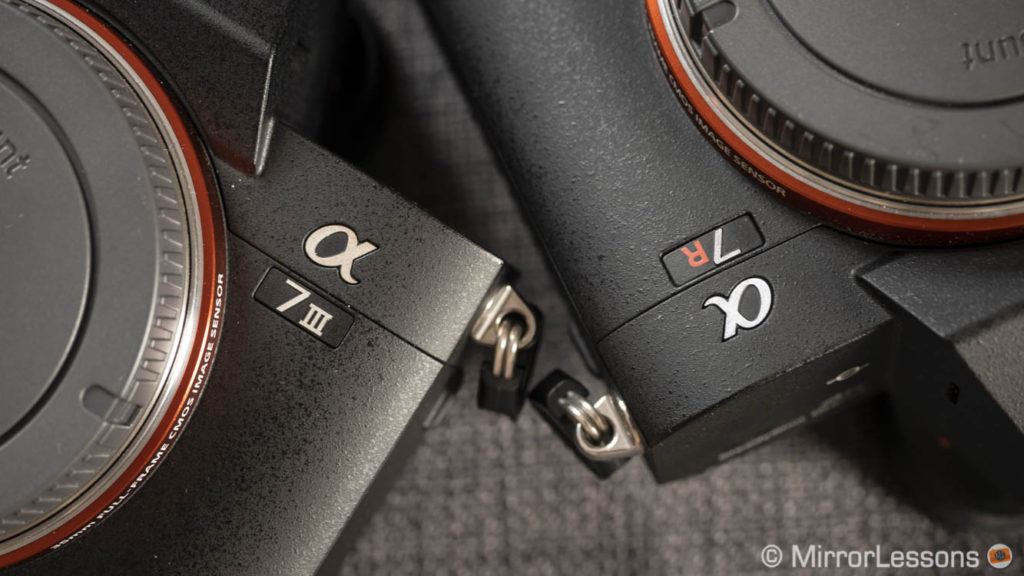
The alternative name is ILCE-7, ILCE-9 or ILCE-1, where ILCE means Interchangeable Lens Camera E-mount.
E-mount / mirrorless
The E-mount is a lens mount designed for mirrorless cameras, or in other words, cameras that lack the flipping mirror and optical viewfinder found in DSLRs. As a result, the mount has a shorter optical flange distance (from the back of the lens to the sensor) and allows the company to design smaller bodies. The E-mount was launched in 2010 with the Nex 3 (APS-C camera).
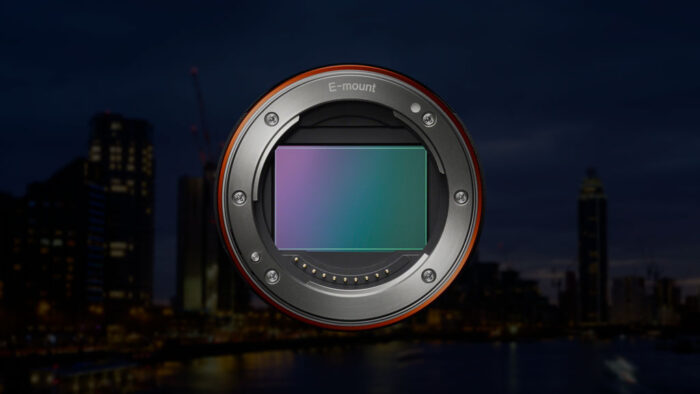
E-mount must not be confused with A-mount, which is the lens mount designed by Minolta and inherited by Sony, used for DSLR and DSLT cameras.
Full frame
Full frame refers to the 35mm format with a size of 36x24mm (the same as 35mm film). It is smaller than medium format, but bigger than APS-C and micro four thirds.
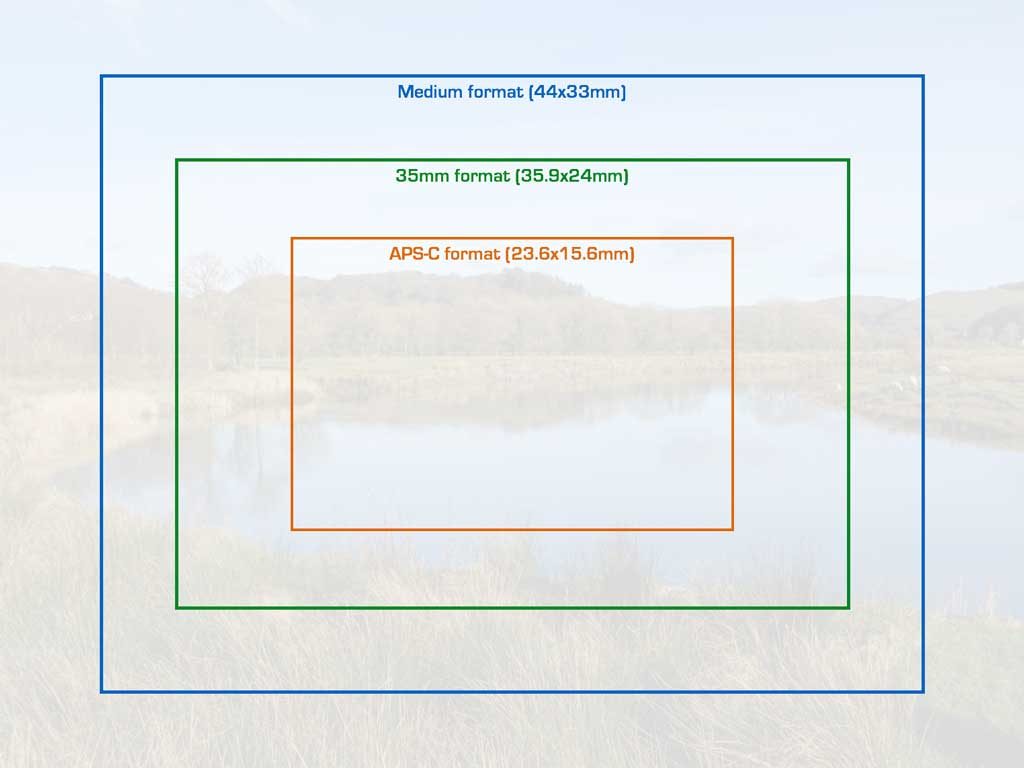
Sensor technology
Throughout this article, you’ll see two main terms related to the sensor:
- BSI (back-illuminated) is a sensor designed to gather light more efficiently by moving the photodiodes (semiconductors that convert light into electricity) closer to the micro-lenses on the surface, whereas a traditional front-side illuminated sensor has metal wiring between the micro lenses and the photodiodes. A BSI sensor provides better low light performance among other things.

- A stacked sensor is a sensor where each layer (pixel area, signal processing circuit) is fabricated independently and stacked together. This gives engineers more flexibility, allowing them to design more complex structures as well. For example, Sony’s stacked sensors include an integral memory to increase the processing speed. Stacked sensors have the advantage of offering faster readout speeds, which can translate into faster continuous shooting speeds among other things.
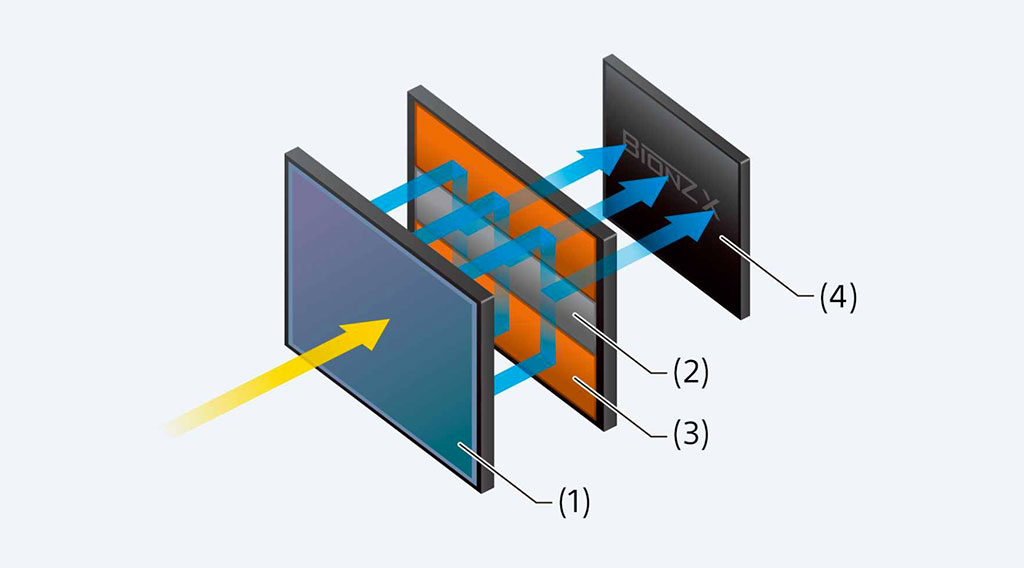
Mechanical vs Electronic shutter
With the mechanical shutter, there are two curtains that move up and down to cover, uncover and then cover the sensor again when you take a photograph.
With the electronic shutter, the horizontal lines of pixels are powered one after the other from top to bottom (think of a scanner, but much faster). There are no mechanical elements involved.
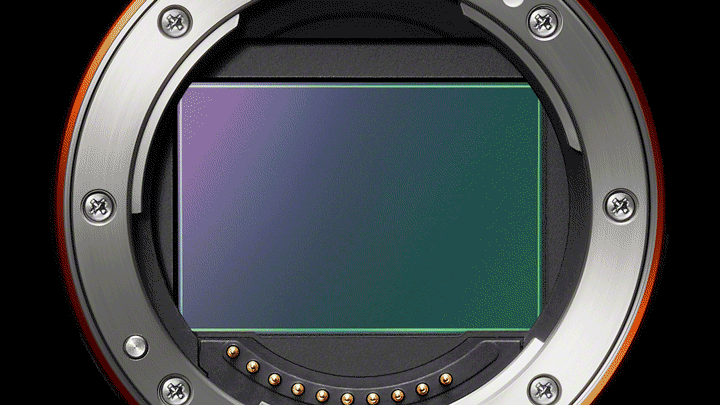
With the right amount of power, the electronic shutter allows you to use faster shutter speeds and faster drive speeds than the mechanical shutter. It also enables the possibility of continuous live view with no blackouts in the viewfinder or LCD screen.
Machine learning Autofocus
In the last couple of years, Sony, as well as other brands, has started to integrate machine learning technology (used a lot on smartphones) into the software of its cameras, especially concerning autofocus.

In simple terms, Sony has “trained” the cameras to understand what humans and animals look like, with a large database of images where the subjects are in all sorts of position and situations. As a result, the AF system has learned how to detect a human being or an animal faster and more accurately, even if it is distant, turns around or is partially hidden.
Pixel-Shift Multi Shooting
The A1 and some A7R models with sensor stabilisation can capture a series of images in a row, and move the sensor slightly in between shots. You can then composite the files in post to produce a final photo with more resolution than the native megapixel count of the sensor, and with better colour resolution too, because each point in the image is captured by at least one red, green and blue pixel.
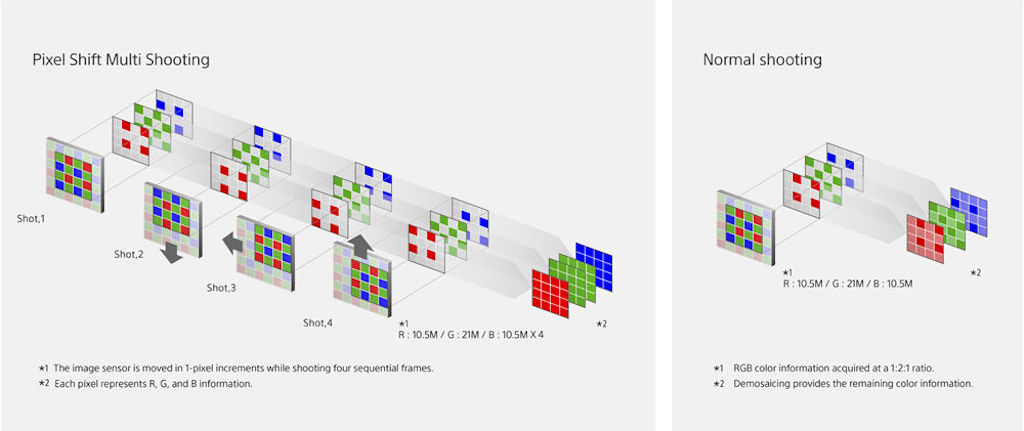
Video recording
- Oversampling means the camera reads more pixels than necessary and downscales the resolution to create the file (for example using the equivalent of 7K to create 4K video). This method delivers the best quality possible.
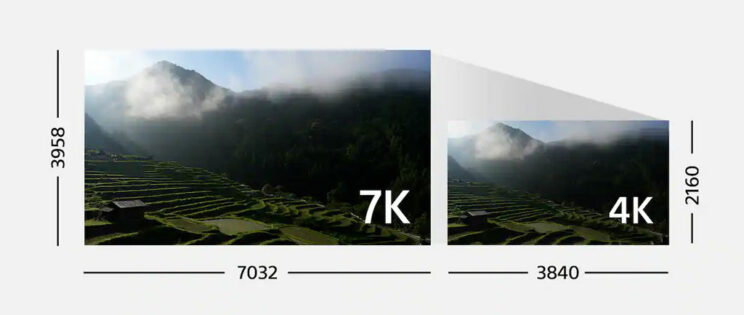
- Line-skipping, as opposed to oversampling, means the camera literally skips rows of pixels while creating the video image, which can result in a loss of sharpness, as well as more artefacts such as aliasing.
- 10-bit 4:2:2 refers to the colour depth (10-bit) and colour sampling (4:2:2). In short, it means the camera records double the colour information and 64 times more colour depth than 8-bit 4:2:0, which is what is found in most mirrorless cameras.
The flagship: Sony A1
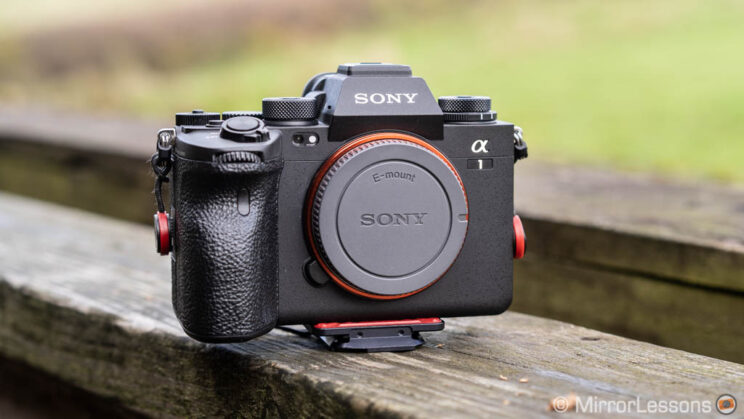
Release date:
March, 2021
On sale
($6500 / £6500 / €7300)
The A1 blends the best Sony has to offer into one body when it comes to performance (it’s the fastest E-mount camera ever) and high resolution (50MP sensor).
It offers the quickest and most advanced autofocus of any Alpha camera, and is the first product in the full frame line-up to record 8K video. Flash sync speed has been improved when using the mechanical or electronic shutter, and you also get state-of-the-art tech for the viewfinder and memory cards.
The A1 is the most expensive Alpha camera you can find on the market, but offers technology you won’t find in any other E-mount model (or most other mirrorless cameras for that matter).
Sony A1 highlights:
- 50MP Stacked BSI Sensor
- ISO 100-32,000 (50-102,400 extended)
- AF/AE calculations up to 120 times/s
- Machine learning AF tracking and Eye AF for humans, animals and birds (humans only in video mode)
- 30fps with AF/exposure Tracking
- 1/400s (full frame) or 1/500s (APS-C) flash sync speed
- Phase detection AF can work down to f/22 with high drive speed
- 5-axis in-body image stabilisation
- Pixel-Shift mode with 200MP output
- 8K video up to 30p with oversampling
- 10-bit 4:2:2 internal recording
- 16-bit RAW video via HDMI
- 9.44M dots Viewfinder (0.9x magnification, 240Hz refresh rate)
- Dual SD / CFexpress Type A card slots
- Latest body design (improved ergonomics over earlier models)
Should I buy the Sony A1?
If you have the budget, it’s the camera that covers (almost) every need, but I think wildlife photographers in particular can benefit from the combination of super speed and high megapixels.
Any reason I should avoid the A1?
If your main interest is video but you’re not hyped about 8K, the A7S III is a better choice (and will save you money).
Reminder: the links below are affiliate links. If you decided to buy something after clicking the link, we will receive a small commission.
Check price of the Sony A1 on
B&H Photo
Second-hand Sony gear on
MPB US | MPB UK
More about the Sony A1
Fast performance: Sony A9 series
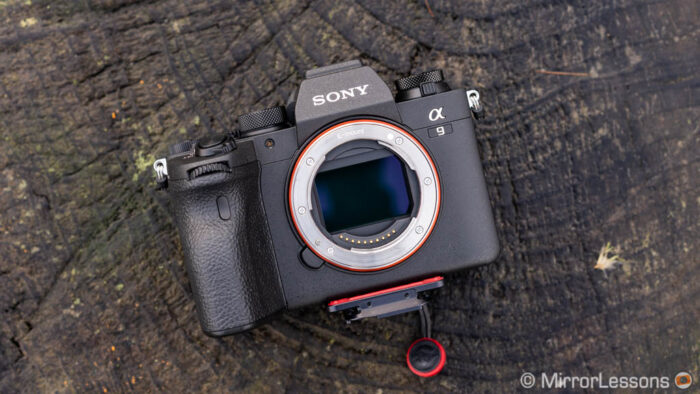
A9 release date:
May 2017
Discontinued
($2000 / £2000 / €2500 used)
A9 II release date:
October 2019
On sale
($4500 / £4200 / €4900)
Before the A1 arrived, the A9 mark 1 and mark 2 were the two cameras with the fastest performance. They too feature a stacked sensor, but with 24MP. They use an older image processor, have a slower burst speed and AF calculations, and can’t sync flash as fast as the flagship model.
But don’t discard the A9 just yet. The A1 may be quicker and have more resolution, but the A9 bodies are less expensive and remain way faster than any other Alpha cameras mentioned below.
The original A9 marked an important step in the use of the electronic shutter, unveiling its potential not only for superior continuous shooting speeds, but also for the possibility of recording with continuous live view and no blackouts.
The first A9 is now discontinued but you can find it second-hand. The differences between it and the mark II model are minor, and merely relate to the drive speed with the mechanical shutter (10fps vs 5fps), improved ergonomics and more extra features for professional sports photographers, such as voice memo and faster connectivity.
Sony A9 / A9 II highlights:
- 24MP BSI Stacked Sensor
- ISO 100-51,200 (50-204,800 extended)
- AF/AE calculations up to 60 times/s
- Machine learning tracking and Eye AF for humans and animals (humans only for video)
- 20fps with AF/Exposure tracking
- Phase detection AF can work down to f/16 with high drive speed
- 5-axis in-body image stabilisation
- 3.69M dot viewfinder (0.78x magnification, 120Hz refresh rate)
- Dual SD UHS-II card slots (UHS-II only in slot nb.1 for the A9 mk1)
- latest body design for the A9 II (improved ergonomics over earlier models such as the A9)
Should I buy the Sony A9 or A9 II?
The original A9 can only be found second-hand, but if you get a copy in good condition, it’s worth considering because there aren’t a lot of cameras with such capabilities. The mark II model improvements are, for most people, not worth almost double the price.
Any reason I should avoid the A9 or A9 II?
They can record 4K up to 30p with excellent sharpness, but you can’t take fully advantage of the sensor’s quality because they lack advanced settings such as 10-bit, Log and HLG profiles. If you care about video, there are better options.
Reminder: the links below are affiliate links. If you decided to buy something after clicking the link, we will receive a small commission.
Check price of the Sony A9 II on
Amazon | B&H Photo | eBay
Second-hand Sony gear on
MPB US | MPB UK
More about the A9 and A9 II
- Sony A1 vs A9 II – The 10 main differences
- Sony A9 vs A7R III – Full comparison
- Sony A9 vs A9 II – The 10 main differences
R for Resolution: Sony A7R series
Sony has released four different models with the ‘R’ name, where the letter means ‘resolution’ and implies a sensor with a large megapixel count (from 36MP on the first model to 61MP on the latest). These sensors all come without the low-pass filter to maximise sharpness.
Sony A7R V (mark 5)
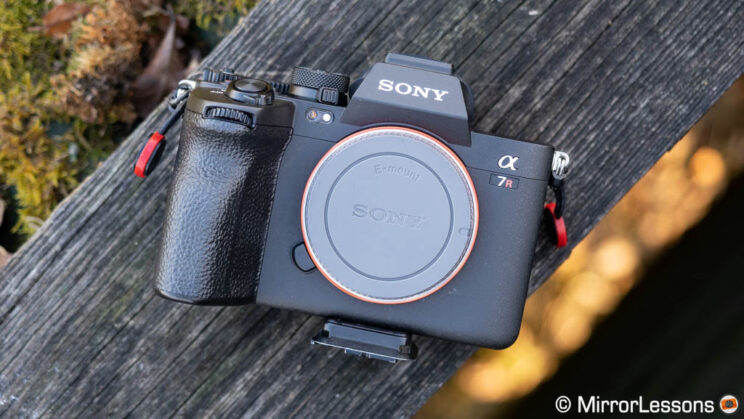
Release date:
October 2022
On sale
($3900, £4000 or €4500)
The A7R V is the full frame model with the highest megapixel count in the world: 61.0MP, a record it shares with its predecessor the A7R IV. Although the two models have a number of things in common, such as the sensor and the continuous shooting speed, the 5th generation of the ‘R’ series introduces Sony’s most advanced autofocus and image stabilisation systems yet, as well as 8K video for the first in the Alpha line-up.
Sony A7R V highlights:
- 61MP BSI sensor
- ISO 100-32,000 (50-102,400 extended)
- AI-Based Processing Unit and new Subject Detection AF (the camera can recognise Humans, Animals, Birds, Insects, Cars, Trains and Aeroplanes)
- 10fps with AF and Exposure Tracking
- Phase detection AF can work down to f/22 with high drive speed
- 5-axis in-body image stabilisation with 8 stops of compensation (highest rating of any Sony camera)
- Pixel-Shift Multi Shooting (240MP output) with motion compensation (requires Sony’s Imaging Edge software)
- 8K 25p and 4K 60p recording (1.24x crop)
- Internal 10-bit 4:2:2, 16-bit RAW output
- 0.64-in OLED 9.44M dots Viewfinder (0.90x magnification, 240Hz refresh rate)
- 4-axis multi-angle LCD monitor
- Dual SD UHS-II / CFexpress Type A card slots
- Latest body design (improved ergonomics over earlier models)
Should I buy the Sony A7R V?
If you seek the ultimate resolution for photos and video, then by all means the A7R V is the answer. Add to the recipe a lot of improvements, from the stunning viewfinder to the next generation autofocus, and it becomes difficult not to give this camera serious consideration.
Any reason I should avoid the A7R V?
The difference in image quality with its predecessor is null, so landscape, still life and studio photographers may not see enough reasons to buy the latest model over the less expensive mark IV version. The stabilization improvements are welcomed, but I had mixed results with the autofocus when shooting wildlife. It works fantastically for stationary or small moving subjects, but I didn’t see any improvement in my birds in flight test.
Reminder: the links below are affiliate links. If you decided to buy something after clicking the link, we will receive a small commission.
Check price of the Sony A7R V on
Amazon | Amazon UK | B&H Photo | eBay
Sony A7R IV / A7R IVA (mark 4)
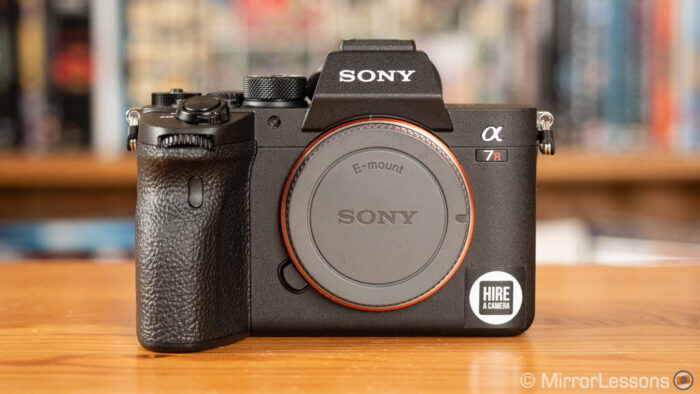
Release date:
September 2019
On sale
($3500 / £3200 / 3400€)
The A7R IV shares the impressive 61MP sensor found on the A7R V. Despite the superb resolution, the camera maintains more or less the same speed and performance as its predecessor the A7R III, which means that it is more versatile than you’d think.
Note: the original A7R IV is now discontinued, having been replaced by the A7R IVA. The changes are of little importance. The most noticeable improvement is the higher resolution of the LCD screen (2.36M vs 1.44M dots on the original product). The price remains the same.
Sony A7R IV highlights:
- 61MP BSI sensor
- ISO 100-32,000 (50-102,400 extended)
- Machine learning AF tracking and Eye AF for humans and animals (humans only for video)
- 10fps with AF and Exposure Tracking
- Phase detection AF can work down to f/11 with high drive speed
- 5-axis in-body image stabilisation
- Pixel-Shift Multi Shooting (240MP output)
- 4K recording up to 30p without the 30min/clip limitation
- Full HD up to 120p
- 5.76M dots Viewfinder (0.78x magnification, 120Hz refresh rate)
- Dual SD UHS-II card slots
- Latest body design (improved ergonomics over earlier models)
Should I buy the Sony A7R IV?
If you care about megapixels more than anything, this is currently the full frame camera with the highest sensor resolution ever. The fact that it also brings good ergonomics, decent burst speeds, excellent autofocus and capable video makes it one of the finest products listed in this article.
Any reason I should avoid the A7R IV?
If you’re willing to let a few megapixels go, you can spend less and still get excellent image quality with the A7R III (more below). For video, the best quality comes with a 1.5x sensor crop (Super35/APS-C mode), which can be a bummer for some, and there is no 10-bit option.
Reminder: the links below are affiliate links. If you decided to buy something after clicking the link, we will receive a small commission.
Check price of the Sony A7R IV on
Amazon | Amazon UK | B&H Photo | eBay
Second-hand Sony gear on
MPB US | MPB UK
Sony A7R III / A7R IIIA (mark 3)
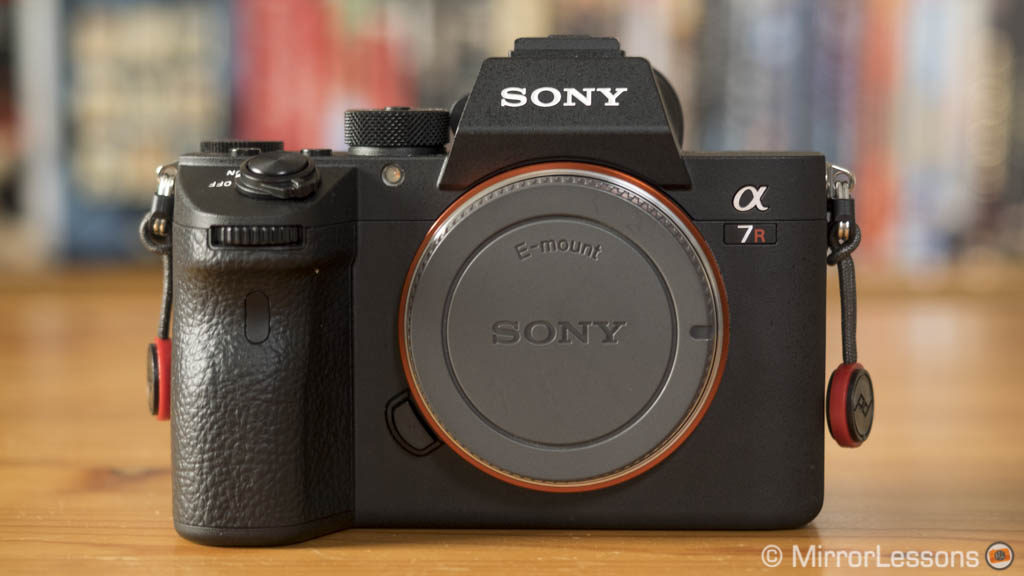
Release date:
October 2017
On sale
($2800 / £2200 / 2300€)
The A7R III brought a more professional body to the Alpha E-mount series, with dual card slots, a larger battery, more resolution for the EVF and faster performance. The sensor remains the same as the acclaimed A7R II, with a few minor tweaks. Sony also managed to make the 4K video quality in full frame mode acceptable, despite the line-skipping process.
Note: the original A7R III has been replaced by the A7R IIIA. Small changes include higher resolution for the LCD screen (2.36M vs 1.44M dots on the original model) and a faster USB C port (10Gbps vs 5Gbps).
Sony A7R III highlights:
- 42.4MP BSI sensor
- ISO 100-32,000 (50-102,400 extended)
- Eye AF for humans and animals (photos only)
- 10fps with AF Tracking
- 5-axis in-body image stabilisation
- Pixel-Shift Multi Shooting (42MP output with better colour resolution)
- 4K recording up to 30p, Full HD up to 120p
- 3.69M dots Viewfinder (0.78x magnification, 120Hz refresh rate)
- Dual SD card slots (UHS-II on slot 1)
Outdated specs
- Phase detection AF can work down to f/8 with high drive speed
- 30 minute video recording limit / clip
- No 10-bit option for video
Should I buy the Sony A7R III?
When there are deals or cash-back offers, you should find it for a very competitive price and, despite the age, the A7R III houses one of the best full frame sensor on the market. You also get slightly better high ISO and buffer performance in comparison to the A7R IV.
Any reason I should avoid the A7R III?
Nothing that I would deem a deal-breaker, unless we dig into specific needs. For example, the autofocus has its limits when it comes to tracking and, if you’re interested in telephoto lenses and teleconverters, focus is locked on the first frame at apertures smaller than f/8 (when shooting in continuous mode).
For video, the quality in full frame mode is decent, but it is better in APS-C mode (1.5x crop).
Reminder: the links below are affiliate links. If you decided to buy something after clicking the link, we will receive a small commission.
Check the price of the Sony A7R III on:
Amazon | Amazon UK | B&H Photo | eBay
Second-hand Sony gear on
MPB US | MPB UK
Sony A7R II (mark 2)
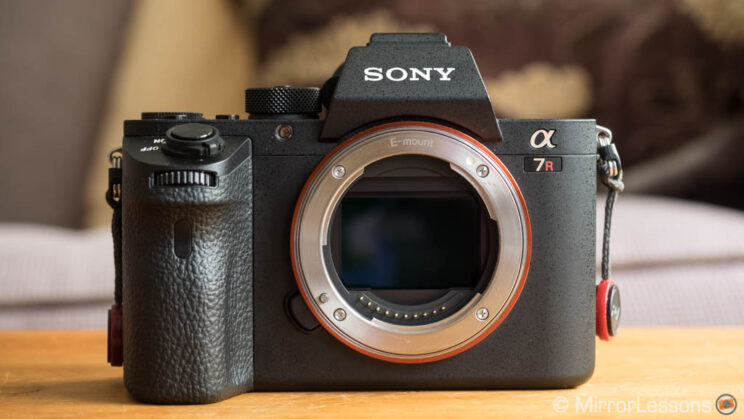
Release date:
August 2015
Discontinued
($1000 / £950 / 1100€ used)
The A7R II was a major breakthrough in the E-mount series thanks to its new (at the time) phase detection autofocus that was compatible with DSLR lenses, maintaining decent AF performance and retaining all the automatisms such as optical stabilisation.
This is where the hype for electronic adapters and Canon EF lenses started. While the performance was not always consistent, it certainly helped photographers transition from one system to another, or adopt both. It also helped with the lens selection at a time when Sony FE lenses were few and far between.
Sony A7R II highlights:
- 42.4MP BSI sensor
- ISO 100-25,600 (50-102,400 extended)
- Eye AF for humans (photos only)
- 5-axis in-body image stabilisation
- 4K recording up to 30p, Full HD up to 60p
Outdated specs
- 5fps with AF Tracking
- Phase detection AF doesn’t work with aperture smaller than f/9
- 2.26M dots Viewfinder (0.78x magnification, 60Hz refresh rate)
- 30 minute max. per clip for video, no 10-bit recording
- No touch screen
- 1 SD card slot (UHS-I)
- Old battery and short battery life
Should I buy the Sony A7R II?
If all you want is excellent image quality, the A7R mark II is a really good deal today (as long as you’re happy with second-hand gear), because there are few differences in comparison to the A7R III, and these differences are even less important if you shoot RAW (and why wouldn’t you with such a good sensor).
Any reason I should avoid the A7R II?
It’s an old model so as you might expect, you won’t find the best performance Sony has to offer today, nor the features you take for granted, like dual card slots or a touch screen.
But I would say there are two main reasons to avoid it:
– if you do a lot of astro-photography, the A7R II is one of the Sony cameras affected by what is known as the “star eater” problem. It applies strong noise reduction (JPG and RAW) and eliminates the smallest stars in the sky as a result. This problem was resolved with the third generation.
– if you want full frame video, the A7R II works with line-skipping which means aliasing, moiré and a lot of colour noise at high ISO. The quality is much better in APS-C/Super35 mode, but that means a 1.5x sensor crop.
Reminder: the links below are affiliate links. If you decided to buy something after clicking the link, we will receive a small commission.
Check price of the Sony A7R II on:
Amazon | Amazon UK | B&H Photo | eBay
Second-hand Sony gear on
MPB US | MPB UK
Sony A7R (mark 1)
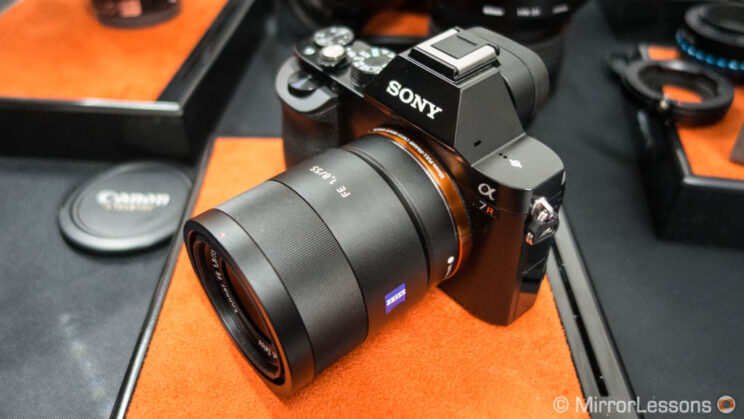
Release date:
December 2013
Discontinued
($700 / £700 / 800€ used)
The one that started all (with the A7). At the time, the 36.4MP was impressive for the sharpness rendering, and the internet went mad in its search for the best adapter to use with M-mount lenses and all sorts of manual focus lenses (with a few caveats and limitations).
Sony A7R highlights:
- 36.4MP sensor
- ISO 100-6,400 (50-25,600 extended)
Outdates specs
- No electronic / silent shutter
- No electronic first curtain shutter
- No image stabilisation
- 4fps (1.5fps with C-AF)
- Eye AF (humans) works in S-AF only (no video)
- Full HD up to 60p (old AVCHD codec)
- 2.36M dots Viewfinder (0.71x magnification)
- No touch screen
- 1 SD card slot (UHS-I)
- Old battery
Should I buy the Sony A7R?
I wouldn’t, unless you can find it for a bargain price and in good condition. It delivers good image quality but there are also limitations to be aware of (see below).
Any reason I should avoid the A7R?
It’s the first generation of Sony’s full frame mirrorless camera. It has a less comfortable design, only works with compressed RAW (a shame considering the good sensor), has poor contrast detection AF and, above all, it has a very annoying shutter shock issue.
Shutter shock means that the movements of the mechanical curtains when taking a photo cause small vibrations that decrease sharpness on the image. Certain shutter speeds are more critical than others, depending on the lens used. It cannot be fixed. You can only learn and avoid the critical shutter speeds as much as possible.
Reminder: the links below are affiliate links. If you decided to buy something after clicking the link, we will receive a small commission.
Check price of the Sony A7R on
eBay
Second-hand Sony gear on
MPB US | MPB UK
More about the A7R series:
- Sony A7R IV vs A7R V
- Sony A7R III vs A7R IV – Full comparison
- Sony A7R II vs A7R III – Full comparison
S for Sensitivity: Sony A7S series
The ’S’ series is all about extra sensitivity, giving you a wider ISO range and better quality in low light. It is also the series that focuses primarily on video. The quality of the sensor and the superb low light capabilities have made the A7S cameras very popular for broadcast productions, especially documentaries.
Sony A7S III (mark 3)
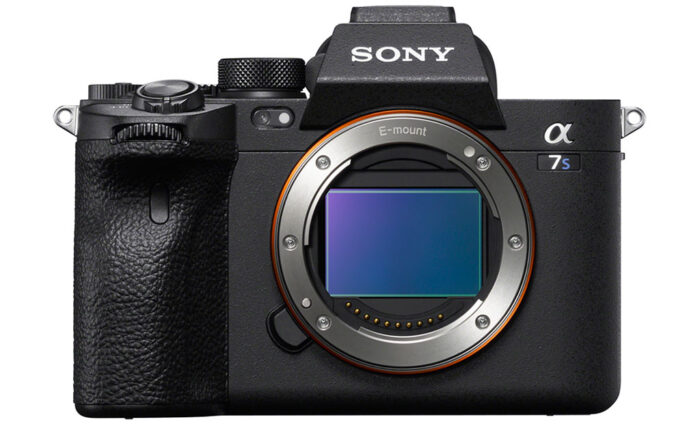
Release date:
October, 2020
On sale
($3500 / £3800 / €4200)
Sony waited four years before updating the S series, but it was worth the wait. It added all the improvements professional video-makers could possibly ask for, including 4K 120p, unlimited recording, improved colour rendering and reliable phase detection autofocus. It’s a completely different beast from its predecessor, and the price has gone up.
Sony A7S III highlights:
- 12MP BSI Sensor
- ISO 80-102,400 (40-409,600 extended)
- Machine learning tracking and Eye AF for humans and animals (humans only in video mode)
- 10fps with AF/Exposure Tracking
- Phase detection AF can work down to f/11 with high drive speed
- 5-axis in-body image stabilisation
- 4K video up to 120p with oversampling, Full HD up to 240fps
- 10-bit 4:2:2 internal recording
- 16-bit RAW video via HDMI (with external recorder)
- 9.44M dots Viewfinder (0.9x magnification, 120Hz refresh rate)
- Multi-angle LCD
- Dual SD / CFexpress Type A card slots
- Latest body design (improved ergonomics over earlier models)
Should I buy the Sony A7S III?
If you mainly do video work and want the best tool Sony has to offer, this is the one.
Any reason I should avoid the A7S III?
If you’re looking for a hybrid photo/video camera, the A7 IV may be a better compromise and costs less.
What about the Sony FX3?
The FX3 is the cine-line version of the A7S III. They have the same sensor, processor and recording capabilities, but the FX30 has a different body design (no viewfinder) that includes an active cooling fan, five 1/4-20 threaded mounting points and three tally lamps. It is more expensive than the A7S III but comes with an XLR handle unit to connect professional microphones (included in the box).
Reminder: the links below are affiliate links. If you decided to buy something after clicking the link, we will receive a small commission.
Check price of the Sony A7S III on
Amazon | B&H Photo | eBay
Second-hand Sony gear on
MPB US | MPB UK
Sony A7S II (mark 2)
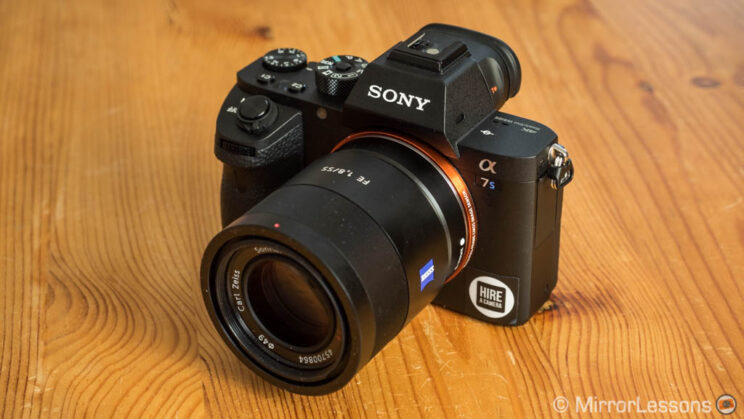
Release date:
October, 2015
Discontinued
($1100 / £1100 / €1400 used)
The A7S II brought 4K video and in-body stabilisation to the S series, while keeping the same sensor and excellent low light capabilities of its predecessor. The body design is generation II, which means 1 card slot and smaller grip.
Sony A7S II highlights:
- 12MP Sensor
- ISO 100-102,400 (50-409,600 extended)
- 5-axis in-body image stabilisation
- 4K video up to 30p with oversampling
Outdates specs
- 5fps drive speed (2.5fps with focus priority)
- Video recording with 30min limit per clip
- No 10-bit recording option for video
- Average viewfinder (2.36M dots, 0.78x magnification, 60Hz refresh rate)
- No touch screen
- 1 SD card slot (UHS-I)
- Old battery with poor battery life
Should I buy the Sony A7S II?
For a very good price (used), you get stunning low light capabilities, and that can be very useful for video work, especially if you do events, documentaries or reportage where light conditions aren’t always optimal.
Any reason I should avoid the A7S II?
The autofocus only works with contrast detection and is not reliable enough, so consider it only if you’re happy with manual focus.
Reminder: the links below are affiliate links. If you decided to buy something after clicking the link, we will receive a small commission.
Check price of the Sony A7S II on:
Amazon | Amazon UK | B&H Photo | eBay
Second-hand Sony gear on
MPB US | MPB UK
Sony A7S (mark 1)
Release date:
April, 2014
Discontinued
($750 / £600 / €600 used)
The original A7S shares the same sensor as the successor models, with very similar low noise at high ISOs. It has the first generation design which is the smallest, but not the most comfortable (although for video it can be less of a problem if you rig the camera with a cage and accessories). If you want 4K video, bear in mind that you need an external recorder connected to the HDMI port.
Sony A7S highlights:
- 12.2MP Sensor
- ISO 100-102,400 (50-409,600 extended)
- Picture Profiles (S-Log2)
Outdates specs
- no image stabilisation
- contrast detection AF
- Eye AF in Single autofocus mode only (no video)
- No internal 4K recording (available via HDMI)
- Full HD up to 60p with 30min limit per clip
- No 10-bit recording for video
- 5fps drive speed
- Average viewfinder (2.36M dots, 0.71x magnification)
- No touch screen
- 1 SD card slot (UHS-I)
- Old battery with poor battery life
Should I buy the Sony A7S?
If you still work primarily in Full HD, the A7S has a very good sensor (same as the mark II model) and gives you great low light capabilities, making the camera versatile in many situations.
Any reason I should avoid the A7S?
You can’t rely on the autofocus for video, so consider it if you’re happy with manual focus. Needless to say, if you want 4K, there are more practical options.
Reminder: the links below are affiliate links. If you decided to buy something after clicking the link, we will receive a small commission.
Check price of the Sony A7S on
eBay
Second-hand Sony gear on
MPB US | MPB UK
More about the A7S series:
- Sony A7S II vs A7S III – The 10 main differences
- Sony A7S II vs A7R II – Full comparison
- Sony A7S vs A7R – The 5 main differences
The all-rounder: Sony A7 series
The most popular range of cameras is the one without a letter after the ‘7’. These are the cameras that, since the beginning, have tried to combine high quality and performance at a competitive price.
Sony A7 IV (mark 4)
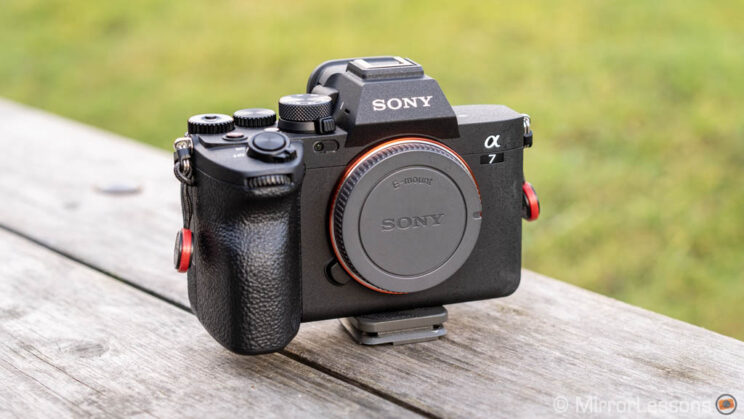
Release date:
October 2021
On sale
($2500 / £2400 / €2800)
One of the most awaited cameras of 2021, the A7 mark IV, is a very good upgrade from its popular predecessor. We can complain about a few things like the cropped 4K 60p mode or the handicapped 10fps burst, but there are also a lot of improvements on almost every front (design, EVF, sensor autofocus, video recording) that make the 4th generation a very mature product.
Sony A7 IV highlights:
- 33MP BSI sensor
- ISO 100-51,200 ISO (50-204,800 extended)
- Machine learning tracking and Eye AF for humans, animals and birds (still and video)
- 10fps with AF/Exposure Tracking
- Phase detection AF can work down to f/22 with high drive speed
- 5-axis in-body image stabilisation
- 4K recording up to 30p (full width) and 60p (Super35 crop) without recording limitation
- Full HD up to 120p
- 10-bit 4:2:2 internal
- 3.69M dots Viewfinder (0.78x magnification, 120Hz refresh rate)
- Multi-angle LCD screen
- USB streaming (works as a webcam without extra softwares)
- Dual SD UHS-II card slots (optional CFexpress ‘A’ in slot 1)
- Latest body design (improved ergonomics over earlier models)
Should I buy the Sony A7 IV?
You get an excellent blend of image and video quality that few other mirrorless cameras can manage. The autofocus is exceptional, whether you’re doing portraits, working at a low light concert or taking pictures of wildlife. It’s one of Sony’s best designs, and there are a lot of extra settings and features to discover. I am currently using it for occasional photo work, as well as to film my YouTube videos.
Any reason I should avoid the A7 IV?
If you’re looking for better continuous shooting, or improved image stabilisation, the camera has no real improvements to offer (except for video, if you stabilise the footage in post using Catalyst). Also, with the 4th generation, the A7 series now has a premium price.
Reminder: the links below are affiliate links. If you decided to buy something after clicking the link, we will receive a small commission.
Check price of the Sony A7 IV on
Amazon | Amazon UK | B&H Photo | eBay
Sony A7 III (mark 3)
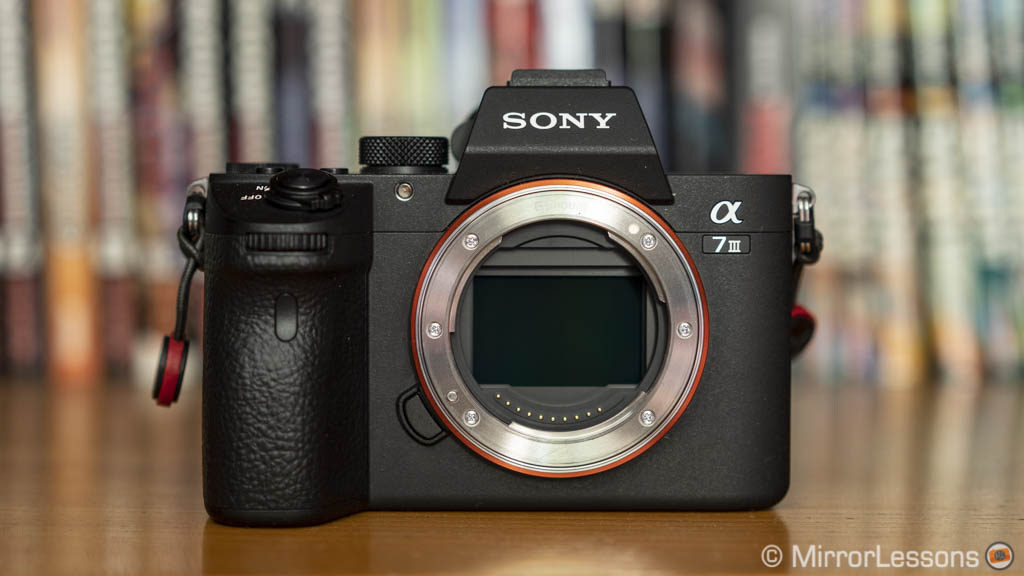
Release date:
April 2018
On sale
($1700 / £1700 / €1950)
Probably the most important camera Sony has ever released, the A7 mark III arrived at the perfect time to prove that the Japanese company was a very serious competitor in the interchangeable-lens camera market. The jokes about Playstation, laughable battery life and poor lens choice ended here.
The A7 III introduced a lot of specs that made the full frame E-mount series very appealing: a new sensor with better dynamic range and high ISO, an advanced autofocus system, 4K video, dual card slots, class-leading battery life, all at the right price. It remains competitive today.
Sony A7 III highlights:
- 24.2MP BSI sensor
- ISO 100-51,200 ISO (50-204,800 extended)
- Eye AF for humans and animals (photos only)
- 10fps with AF Tracking
- Phase detection AF can work down to f/11 with high drive speed
- 5-axis in-body image stabilisation
- 4K recording up to 30p
- Full HD up to 120p
- Dual SD card slots (UHS-II on slot 1)
- Class-leading battery life
Outdated specs
- 30 minute video recording limit / clip
- No 10-bit option for video
- Average 2.36M dots Viewfinder (0.78x magnification, 60Hz refresh rate)
Should I buy the Sony A7 III?
It is still one of the best full frame cameras you can find with an excellent sensor, good autofocus and great video quality. Now that the price is starting to come down, it will soon become a real deal, once special rebates or cash-back offers arrive.
Any reason I should avoid the A7 III?
Not really, unless you have specific needs that the A7 III can’t meet, like 10-bit recording for video or faster drive speeds, just to name a few.
Reminder: the links below are affiliate links. If you decided to buy something after clicking the link, we will receive a small commission.
Check price of the Sony A7 III on
Amazon | Amazon UK | B&H Photo | eBay
Second-hand Sony gear on
MPB US | MPB UK
Sony A7 II (mark 2)
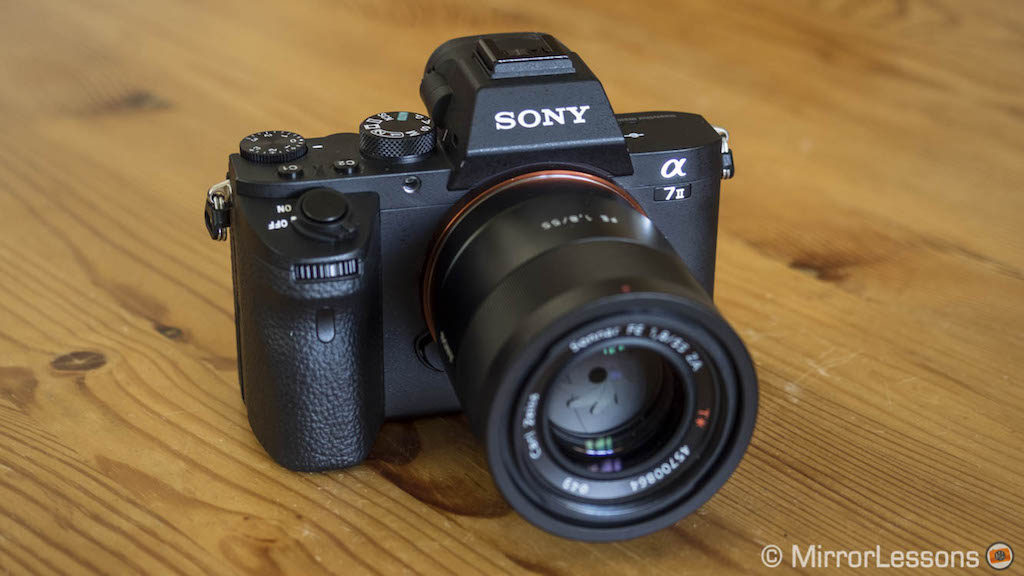
Release date:
December 2014
On sale
($1000 / £900 / €1000)
The A7 II was the first full frame camera with 5-axis stabilisation. Seven years later, the IBIS performance is not that different from the most recent models (a good thing for this camera, perhaps less flattering for the evolution of the system). It arrived just one year after the launch of the A7, with an updated design, 30% better autofocus and a few more settings for video.
Sony A7 II highlights:
- 24.3MP sensor
- ISO 100-6,400 ISO (50-25,600 extended)
- 5-axis in-body image stabilisation
- S-log2 gamma for video
Outdated specs
- No electronic shutter
- Eye AF limited to photos and S-AF
- 5fps with AF Tracking
- Full HD up to 60p
- 2.36M dots Viewfinder (0.71x magnification, 60Hz refresh rate)
- LCD screen not touch sensitive
- Single SD card slot (UHS-I)
- Old battery and poor battery life
Should I buy the Sony A7 II?
The price is tempting for a full fame camera that offers good image stabilisation, good image quality and decent autofocus performance. Whether you’re on a budget, or want to invest more in the lenses than the body (generally a good idea), the A7 II is worth considering.
Any reason I should avoid the A7 II?
Not really. Obviously it has aged and now has two successors with much better specifications and performance, but that is the same for the every product that evolves in consumer electronics. That said, it too suffers from the ‘star eater’ issue like the A7R II, so if your main genre is astro-photography, you need to be aware of this.
Reminder: the links below are affiliate links. If you decided to buy something after clicking the link, we will receive a small commission.
Check price of the Sony A7 II on
Amazon | Amazon UK | B&H Photo | eBay
Second-hand Sony gear on
MPB US | MPB UK
Sony A7 (mark 1)
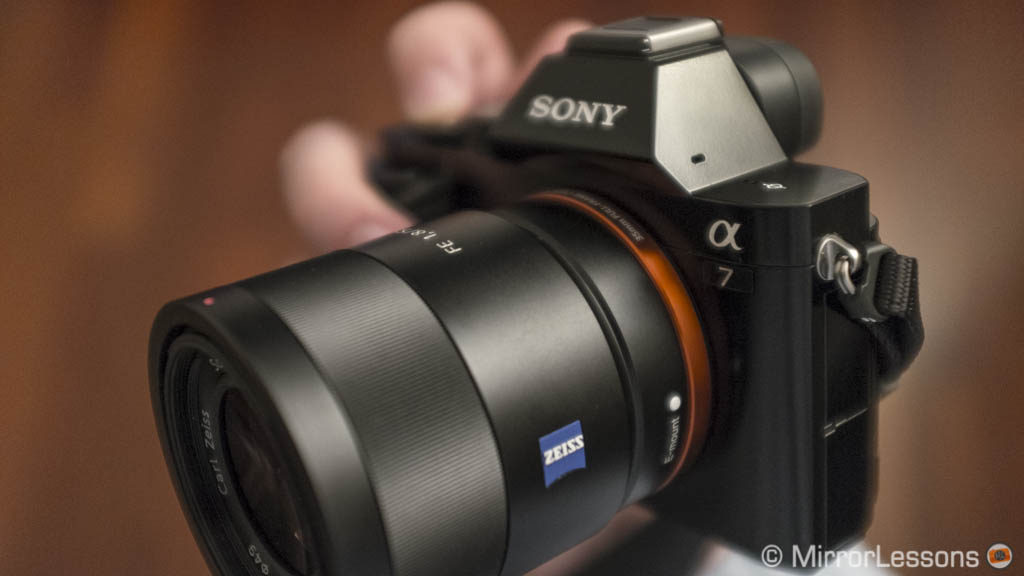
Release date:
December 2013
Discontinued
($500 / £400 / €400 used)
The first A7 model, like the A7R, made photographers curious about the possibility of adapting manual focus lenses, also because the choice of native AF lenses was limited at launch (understandably). It’s a camera that I used a lot and that gave me great satisfaction despite the various flaws of a first generation model.
Sony A7 highlights:
- 24.3MP sensor
- ISO 100-6,400 ISO (50-25,600 extended)
Outdated specs
- No electronic shutter
- No uncompressed RAW
- No in-body stabilisation
- Eye AF limited to photos and S-AF
- Phase detection AF not compatible with adapted DSLR lenses
- 5fps (2.5fps with focus priority)
- Full HD up to 60p (AVCHD codec, no Picture Profiles)
- 2.36M dots Viewfinder (0.71x magnification)
- No touch screen
- Single SD card slot (UHS-I)
- Old battery and poor battery life
Should I buy the Sony A7?
The second-hand price is tempting, but look hard and make sure there isn’t a used A7 II for a few 100 bucks more. Yes, the investment would be greater, but it would be worth it.
Any reason I should avoid the A7?
It has all the flaws of a first generation model, which is fair. Also, annoying sensor flares appear when there are strong sources of lights in your frame (street lights at night for example).
Reminder: the links below are affiliate links. If you decided to buy something after clicking the link, we will receive a small commission.
Check price of the Sony A7 on
eBay
Second-hand Sony gear on
MPB US | MPB UK
More about the A7 series:
- Sony A7 III vs A7 IV – Full Comparison
- Sony A7 II vs A7 III – The 10 main differences
- Sony A7 vs A7 II – The 10 main differences
Compact size: Sony A7C
For three years, the original A7C was the only model available. Then in 2023, Sony introduced two new cameras, the A7C II and A7CR, effectively creating a new segment.
Sony A7CR
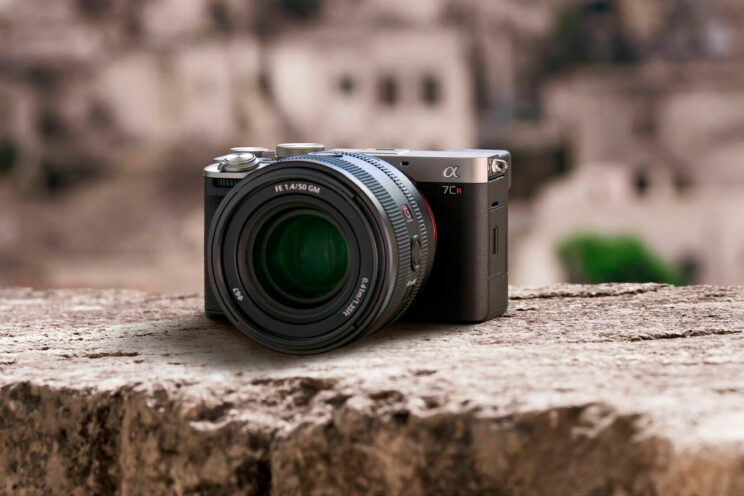
Release date:
August 2023
On sale
($3000 / £3200 / €3700)
The A7CR is essentially a compact version of the A7R V, offering the same stunning image quality and advanced autofocus system in a smaller, lighter package. The only things it lacks from a quality and performance perspective are 8K recording capabilities, a slightly higher stabilization rating, and a marginally faster drive speed.
Sony A7CR highlights:
- 61MP BSI sensor
- ISO 100-32,000 (50-102,400 extended)
- AI-Based Processing Unit and new Subject Detection AF (it can detect Humans, Animals, Birds, Insects, Cars, Trains and Aeroplanes)
- 8fps with AF and Exposure Tracking
- 5-axis in-body image stabilisation with 7 stops of compensation
- Pixel-Shift Multi Shooting (240MP output) with motion compensation (requires Sony’s Imaging Edge software)
- 4K 60p recording (1.24x crop)
- Internal 10-bit 4:2:2
- 0.39-in OLED 2.36M dots EVF (0.70x magnification, 120Hz refresh rate)
- Standard multi-angle LCD monitor
- One SD UHS-II slot
- Compact body design
Should I buy the Sony A7CR?
If you’re interested in the 61MP high-resolution sensor, prefer a small full-frame camera, and can do without a better EVF, two card slots, or an AF joystick, then the A7CR is a worthwhile choice that also saves you some money.
Any reason I should avoid the A7R V?
Check the price of the A7R IV, which also boasts the same sensor along with all the aforementioned benefits of a larger body, unless the compact factor is your the main thing you want.
Reminder: the links below are affiliate links. If you decided to buy something after clicking the link, we will receive a small commission.
Check the price of the Sony A7CR on
B&H Photo
Sony A7C II
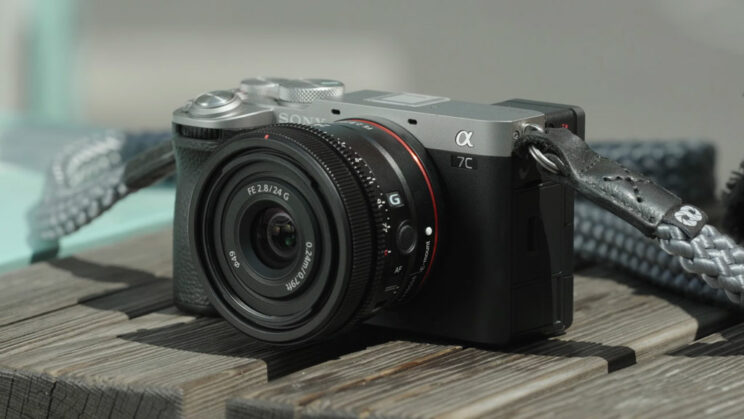
Release date:
August 2023
On sale
($2200 / £2100 / €2400)
The A7C II succeeds the original A7C and brings a notable list of improvements, including a newer sensor, advanced AF capabilities, and enhanced video specifications. It also features an improved EVF magnification, a more comprehensive menu system, and more touch capabilities.
Sony A7C II highlights:
- 33MP BSI sensor
- ISO 100-51,200 ISO (50-204,800 extended)
- AI-Based Processing Unit and new Subject Detection AF (it can detect Humans, Animals, Birds, Insects, Cars, Trains and Aeroplanes)
- 10fps with AF/Exposure Tracking
- 5-axis in-body image stabilisation (7 stops)
- 4K recording up to 30p (full width) and 60p (Super35 crop)
- Full HD up to 120p
- 10-bit 4:2:2 internal
- 0.39-in 2.36M dots Viewfinder (0.70x magnification, 120Hz refresh rate)
- Multi-angle LCD screen
- USB streaming (works as a webcam without extra softwares)
- 1 SD UHS-II card slot
- Extra dial at the front, compared to the previous model
Should I buy the Sony A7C II?
It’s essentially a smaller sibling to the A7 IV, offering the same image and video quality but with more advanced autofocus. If you’re in search of a competitive all-rounder in a small package, the A7C II is a compelling choice, and it even comes at a slightly lower price.
Any reason I should avoid the A7C II?
Depending on your location, the price difference compared to the A7 IV might not be that significant, so it’s worth considering if you can benefit from a larger EVF, two card slots, and other features. Additionally, if you don’t require the latest bells and whistles but appreciate the compact form factor, the original A7C remains a more affordable option.
Reminder: the links below are affiliate links. If you decided to buy something after clicking the link, we will receive a small commission.
Check the price of the Sony A7C II on
B&H Photo
Sony A7C
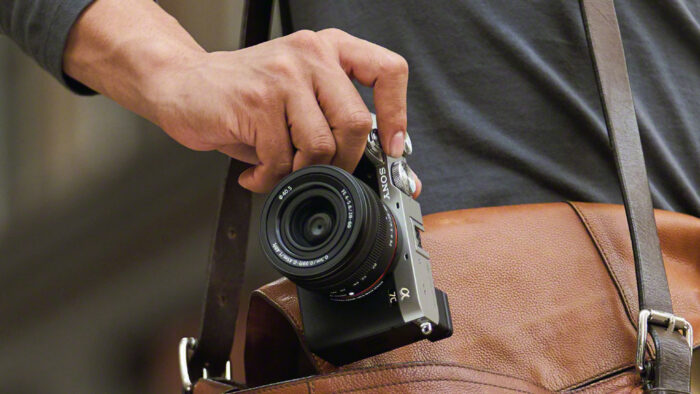
Release date:
October 2020
On sale
($1600 / £1650 / €1700)
When Sony decided to release a more compact full frame camera, they didn’t need to look far. They took the design of the A6xxx APS-C series, put the A7 III sensor inside and added a few tweaks.
Sony A7C highlights:
- 24.2MP BSI sensor
- ISO 100-51,200 ISO (50-204,800 extended)
- Machine learning AF and Eye AF for humans and animals (humans only in video mode)
- 10fps with AF Tracking
- 5-axis in-body image stabilisation
- 4K recording up to 30p without recording limit
- Full HD up to 120p
- multi-angle LCD
- 1 SD card slot (UHS-II)
- compact design
Outdated specs
- no 10-bit recording for video
- small 2.36M dots Viewfinder (0.59x magnification)
Should I buy the Sony A7C?
If your priority is compactness, and you plan to use small lenses with it, the A7C is a great solution among full frame cameras.
Any reason I should avoid the A7C?
Not really. Personally I wouldn’t like the smaller EVF and lack of extra buttons/dials, but it is a personal choice.
Reminder: the links below are affiliate links. If you decided to buy something after clicking the link, we will receive a small commission.
Check price of the Sony A7C on
Amazon | Amazon UK | B&H Photo | eBay
Second-hand Sony gear on
MPB US | MPB UK
More about the A7C:
V-Logger Friendly: Sony ZV-E1
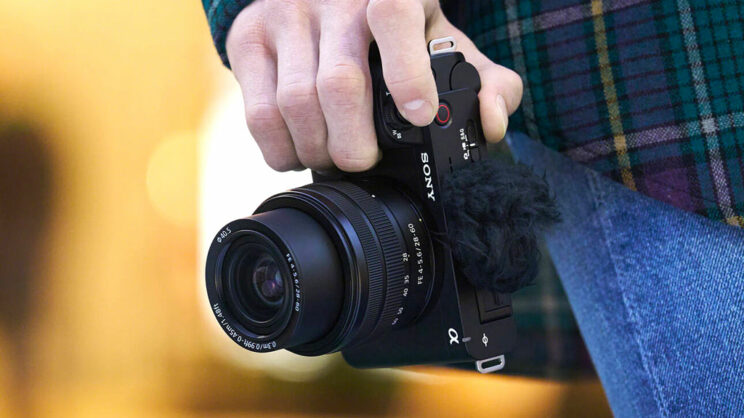
Release date:
March 2023
On sale
($2200 / £2350 / €2700)
The ZV-E1 belongs to a recent family of compact cameras tailored for solo content creators and YouTubers. It’s the first full-frame model in this category and shares specifications with the more expensive A7S III, as well as the cine-camera FX30.
Sony ZV-E1 highlights:
- 12MP BSI Sensor
- ISO 80-102,400 (40-409,600 extended)
- AI-Based Subject Detection AF (Humans, Animals, Birds, Insects, Cars, Trains and Aeroplanes)
- 10fps with AF/Exposure Tracking
- 5-axis in-body image stabilisation (5 stops)
- 4K video up to 120p with oversampling, Full HD up to 240fps
- 10-bit 4:2:2 internal recording
- no viewfinder
- Multi-angle LCD
- 1 SD card slot
- tally lamp, auto framing mode
- no mechanical shutter (only electronic)
Should I buy the Sony ZV-E1?
Considering that it offers the same outstanding video capabilities as the A7S III and FX30, but in a more budget-friendly package, the ZV-E1 is a compelling choice for those seeking a high-quality video-centric camera. Notably, not many Sony models support 4K 120p, which sets it apart.
Any reason I should avoid the ZV-E1?
It’s worth noting that the ZV-E1 lacks a viewfinder and has a relatively small form factor, which might not be the best fit for everyone in terms of ergonomics. However, whether these factors pose an issue or not largely depends on your personal preferences.
Reminder: the links below are affiliate links. If you decided to buy something after clicking the link, we will receive a small commission.
Check price of the Sony ZV-E1 on
B&H Photo
More about the A7C:
Best Sony Full Frame Camera for Photography: Which one to choose?
There isn’t one straight answer to this question, because the best camera is the one that fits your needs, and these needs differ from person to person.
It depends on what you want to shoot (landscape, sports, portraits, wildlife, macro, or a bit of everything). Your criteria will also be different if you are a professional or an amateur photographer.
That said, here is a quick summary of all that I’ve written above. It’s a simplified list, so make sure to go back to the appropriate chapter for the camera that interests you the most.
- Do you want the absolute best the brand has to offer, and have the budget for it? Get the Sony A1.
- Do you need very fast performance (autofocus, drive speed) for sports or wildlife? Get the Sony A9 or A9 II.
- Do you prioritise image quality, do a lot of large fine art prints or simply like to work with a lot of resolution? Get the Sony A7R III or A7R IV.
- Do you want a good all-rounder at a competitive price? Get the Sony A7 III, or the A7 IV.
- Do you want an affordable full frame camera? Get the Sony A7 II.
- Do you want the smallest full frame camera Sony has to offer? Get the A7C or A7CR.
Best Sony Alpha Full Frame Camera for Video: which one to choose?
What I’ve written above for photography can be applied here as well, and the choice is a bit easier because we can discard a few models.
- Do you need 8K video? Get the Sony A1 or the A7R V.
- Do you want the best video quality with the most complete settings and flexibility? Get the Sony A7S III
- Do you want a bit of the A7S III, but at a lower price? Get the Sony ZV-E1
- Do you want a good hybrid solution at a competitive price? Get the Sony A7 IV.
- Do you need very good capabilities in low light on a budget? Get the Sony A7S II.
Additional Sony resources on Mirrorless Comparison
Below you can find more comparisons between Sony full frame mirrorless cameras, as well as an extensive series of guides on how to set up and use the cameras for various genres.
More comparisons
- Sony A7 III vs A7R III – Full comparison
- Sony A7 IV vs A7R IV – The 10 main differences
- Sony A7 IV vs A9 II – The 10 main differences
- Sony A7 IV vs A7S III – The 10 main differences
- Sony A7S III vs A7 III – The 10 main differences
- Sony A9 vs A7 III – The 10 main differences
- Sony A7S II vs A7R II – Full comparison
- Sony A7S vs A7R – The 10 main differences

